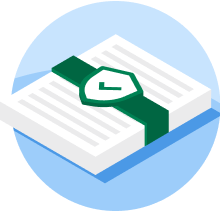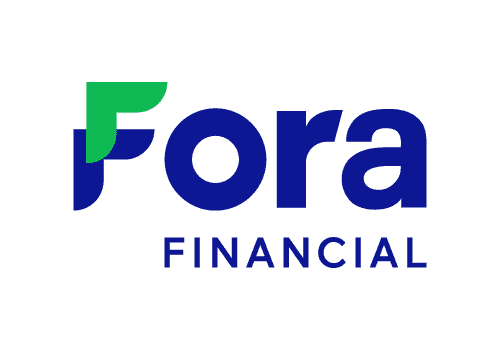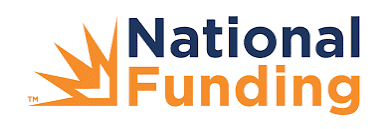best small business loans: More details
U.S. Small Business Administration: Best for Businesses that can’t qualify for bank loans
SBA 7(a) loans offer favorable rates and terms. These government-guaranteed loans can be used for large and long-term funding purposes.
» MORE: NerdWallet’s guide to SBA loansSBA 7(a) loan
with Fundera by NerdWallet
Pros
- Large borrowing maximums.
- Interest rates are capped.
- Long repayment terms available.
Cons
- Collateral is typically required.
- Longer processing times than online lenders.
Pros
- Large borrowing maximums.
- Interest rates are capped.
- Long repayment terms available.
Cons
- Collateral is typically required.
- Longer processing times than online lenders.
with Fundera by NerdWallet
Bluevine: Best for Fast funding
Bluevine offers a simple application and a streamlined underwriting process. The lender can give you a decision within minutes and provide funding in as fast as 24 hours.
» MORE: Compare the best fast business loansBluevine - Line of credit
with Fundera by NerdWallet
Pros
- Cash can be available within 12 to 24 hours.
- Can be used to build business credit.
- Low minimum credit score requirement.
Cons
- Requires weekly payments.
- Not available in North Dakota, South Dakota or Nevada.
- Rates can be high compared with traditional lenders.
Pros
- Cash can be available within 12 to 24 hours.
- Can be used to build business credit.
- Low minimum credit score requirement.
Cons
- Requires weekly payments.
- Not available in North Dakota, South Dakota or Nevada.
- Rates can be high compared with traditional lenders.
with Fundera by NerdWallet
Fora Financial: Best for Bad credit business loans
It can be more difficult to get a business loan with bad credit, but Fora Financial is willing to work with borrowers who have a personal credit score of 570 or higher.
» MORE: Best bad credit business loansFora Financial - Online term loan
with Fundera by NerdWallet
Pros
- Cash can be available quickly.
- Get a discount for prepaying.
- No collateral required.
- Low minimum credit score requirement.
Cons
- Charges a factor rate that makes it more difficult to compare costs with other lenders.
- Can’t build business credit.
- Longest loan term is 24 months.
- Charges an origination fee.
Pros
- Cash can be available quickly.
- Get a discount for prepaying.
- No collateral required.
- Low minimum credit score requirement.
Cons
- Charges a factor rate that makes it more difficult to compare costs with other lenders.
- Can’t build business credit.
- Longest loan term is 24 months.
- Charges an origination fee.
with Fundera by NerdWallet
Headway Capital: Best for Startups
Headway Capital can provide new entrepreneurs with a flexible business line of credit. You only need a minimum of six months in business to qualify.
» MORE: Compare the best startup business loansHeadway Capital - Line of credit
with Fundera by NerdWallet
Pros
- Flexible qualification requirements.
- No prepayment penalties.
- Funds available by next business day after approval.
Cons
- Most borrowers are subject to a 2% draw fee.
- Not available in all U.S. states.
Pros
- Flexible qualification requirements.
- No prepayment penalties.
- Funds available by next business day after approval.
Cons
- Most borrowers are subject to a 2% draw fee.
- Not available in all U.S. states.
with Fundera by NerdWallet
Accion: Best for Women- and minority-owned businesses
Accion is a nonprofit lender that focuses on women and minority business owners, as well as low-to-moderate income entrepreneurs. In addition to business loans, Accion provides educational resources, business coaching and support networks in English and Spanish.
» MORE: NerdWallet’s guide to nonprofit and microlendersAccion Opportunity Fund Small Business Working Capital Loan
with Fundera by NerdWallet
Pros
- Loan amounts from $5,000 to $250,000.
- Customized loan terms.
- No prepayment penalty.
Cons
- Slower processing speed compared with online lenders.
- Charges an origination fee.
- Not available in all U.S. states.
Pros
- Loan amounts from $5,000 to $250,000.
- Customized loan terms.
- No prepayment penalty.
Cons
- Slower processing speed compared with online lenders.
- Charges an origination fee.
- Not available in all U.S. states.
with Fundera by NerdWallet
Fundbox: Best for Low-revenue businesses
Fundbox can offer working capital to businesses that are still growing their revenue. You may be able to qualify with $30,000 in annual revenue.
» MORE: Compare the best business loans for companies with low revenueFundbox - Line of credit
with Fundera by NerdWallet
Pros
- Financing available within two business days after approval.
- Simple application with minimal documentation required.
- Low minimum credit score, time in business and annual revenue requirements.
- No prepayment penalties, account maintenance fees or inactivity fees.
Cons
- Weekly repayments required.
Pros
- Financing available within two business days after approval.
- Simple application with minimal documentation required.
- Low minimum credit score, time in business and annual revenue requirements.
- No prepayment penalties, account maintenance fees or inactivity fees.
Cons
- Weekly repayments required.
with Fundera by NerdWallet
Wells Fargo: Best for Low interest rates
Bank business loans, like Wells Fargo’s BusinessLine® Line of Credit, typically offer the lowest interest rates and most competitive repayment terms. This bank credit line is a good option for affordable working capital for established businesses.
» MORE: Our guide to average business loan interest ratesWells Fargo BusinessLine® Line of Credit
with Fundera by NerdWallet
Pros
- Bank line of credit with competitive interest rates.
- Revolving credit line with no scheduled annual review.
- No collateral required; no prepayment penalties.
Cons
- Must be an established business with strong credit to qualify.
- May take longer to fund than online lenders.
- Annual fee and inactivity fees may apply.
Pros
- Bank line of credit with competitive interest rates.
- Revolving credit line with no scheduled annual review.
- No collateral required; no prepayment penalties.
Cons
- Must be an established business with strong credit to qualify.
- May take longer to fund than online lenders.
- Annual fee and inactivity fees may apply.
with Fundera by NerdWallet
Bank of America: Best for Well-established businesses
Bank of America’s unsecured business term loan offers low interest rates and competitive repayment terms. It’s well-suited for business owners who have been in operation for a couple years and have strong personal credit.
» MORE: Best banks for small-business loansBank of America Business Advantage Unsecured Term Loan
with Fundera by NerdWallet
Pros
- Bank loan with competitive interest rates.
- No collateral required.
- Bank of America’s Preferred Rewards program can offer interest rate discounts and other perks.
Cons
- Can be slow to fund.
- Prepayment fees may apply to early repayments.
- Must be an existing Bank of America customer to apply online.
- Charges an origination fee.
Pros
- Bank loan with competitive interest rates.
- No collateral required.
- Bank of America’s Preferred Rewards program can offer interest rate discounts and other perks.
Cons
- Can be slow to fund.
- Prepayment fees may apply to early repayments.
- Must be an existing Bank of America customer to apply online.
- Charges an origination fee.
with Fundera by NerdWallet
iBusiness Funding: Best for Long repayment terms
iBusiness Funding offers repayment terms up to seven years — which can give you more time to pay and lower monthly payments than shorter-term loans. This online lender can also issue funding more quickly than conventional business lenders.
» MORE: Best long-term business loansiBusiness Funding - Online term loan
with Fundera by NerdWallet
Pros
- Cash can be available within two business days.
- Competitive rates among online lenders.
- Terms up to five years.
- iBusiness Funding also offers SBA loans up to $5 million.
Cons
- Charges an origination fee.
- Must be in business for a minimum of 24 months.
- Minimum credit score is higher than some other lenders.
Pros
- Cash can be available within two business days.
- Competitive rates among online lenders.
- Terms up to five years.
- iBusiness Funding also offers SBA loans up to $5 million.
Cons
- Charges an origination fee.
- Must be in business for a minimum of 24 months.
- Minimum credit score is higher than some other lenders.
with Fundera by NerdWallet
OnDeck: Best for Covering short-term expenses
OnDeck’s term loan is a good option for covering short-term costs, such as buying equipment or inventory, purchasing furniture and supplies and paying utilities. OnDeck also has flexible qualification requirements — making it a worthwhile choice for businesses that can’t qualify for a bank or SBA loan.
» MORE: Best short-term business loansOnDeck - Online term loan
with Fundera by NerdWallet
Pros
- Cash can be available within the same business day (does not apply in California or Vermont).
- Accepts borrowers with a minimum credit score of 625.
- Streamlined application process with minimal documentation required.
- Can be used to build business credit.
Cons
- Cannot fund North Dakota-based businesses.
- Requires frequent (daily or weekly) repayments.
- Interest rates can be high compared with traditional lenders.
- Charges origination fee.
Pros
- Cash can be available within the same business day (does not apply in California or Vermont).
- Accepts borrowers with a minimum credit score of 625.
- Streamlined application process with minimal documentation required.
- Can be used to build business credit.
Cons
- Cannot fund North Dakota-based businesses.
- Requires frequent (daily or weekly) repayments.
- Interest rates can be high compared with traditional lenders.
- Charges origination fee.
with Fundera by NerdWallet
National Funding: Best for Equipment purchases
National Funding can help you purchase new or used equipment and machinery for your business. Since the equipment itself serves as collateral, these equipment loans can be easier to qualify for than other types of small business loans.
» MORE: Best options for equipment financingNational Funding - Equipment financing
with Fundera by NerdWallet
Pros
- Funding in as little as 24 hours.
- Prepayment discounts available.
- Offers loans to startups and borrowers with bad credit.
- No collateral or down payment required.
Cons
- Charges a factor rate that makes it more difficult to compare costs with other lenders.
- Requires higher annual revenue than other online lenders.
- Can't be used to built business credit.
- Charges an origination fee.s a factor rate that makes it more difficult to compare costs with other lenders.
Pros
- Funding in as little as 24 hours.
- Prepayment discounts available.
- Offers loans to startups and borrowers with bad credit.
- No collateral or down payment required.
Cons
- Charges a factor rate that makes it more difficult to compare costs with other lenders.
- Requires higher annual revenue than other online lenders.
- Can't be used to built business credit.
- Charges an origination fee.s a factor rate that makes it more difficult to compare costs with other lenders.
with Fundera by NerdWallet
AltLINE: Best for Financing unpaid invoices
Invoice factoring from AltLINE allows business-to-business companies to access capital that’s tied up in unpaid invoices. This type of fast funding can be useful for managing cash flow issues or paying short-term expenses.
» MORE: Compare the best invoice factoring companiesAltLINE - Invoice factoring
with Fundera by NerdWallet
Pros
- Capital available within 24 to 48 hours.
- No collateral required.
- Manages payment collection from your customers.
- Accepts startups and businesses with bad credit.
Cons
- Fees can become expensive the longer it takes your customers to pay.
- Difficult to compare factoring costs to other types of business loans.
- Charges an origination fee.
Pros
- Capital available within 24 to 48 hours.
- No collateral required.
- Manages payment collection from your customers.
- Accepts startups and businesses with bad credit.
Cons
- Fees can become expensive the longer it takes your customers to pay.
- Difficult to compare factoring costs to other types of business loans.
- Charges an origination fee.
with Fundera by NerdWallet
altbanq: Best for Large financing needs
Altbanq offers term loans in amounts up to $10 million — a higher maximum than many other lenders. It can be a good option for businesses that need to finance larger purchases or projects.
» MORE: Compare the best large business loansaltbanq - Online term loan
with Fundera by NerdWallet
Pros
- Same-day funding available.
- Prepayment discounts available.
- Accessible to high-revenue startups.
- Accessible to startups.
Cons
- Higher credit score requirement than some online lenders.
- Repayment terms max out at 24 months.
- Minimum revenue requirement much higher than other online lenders.
Pros
- Same-day funding available.
- Prepayment discounts available.
- Accessible to high-revenue startups.
- Accessible to startups.
Cons
- Higher credit score requirement than some online lenders.
- Repayment terms max out at 24 months.
- Minimum revenue requirement much higher than other online lenders.
with Fundera by NerdWallet
Jump to
How we chose the best small business loans
- Cost.
- Transparency.
- Underwriting and loan flexibility.
- Credit.
- Application experience.
- Customer service.
Which small business loans we consider
How we keep our picks up to date
- Review information for all loan products regularly. We do a full audit annually. We also update loan details and star ratings as soon as any changes occur.
- Survey business lenders. We ask lenders directly for information that matters to business owners, but may not be publicly available. For instance, we ask whether lenders report to the commercial credit bureaus and if they offer an online dashboard for loan management.
- Test the borrower experience. We start the loan application process online (when possible) to better understand what’s required and how long the process takes. We also call lenders directly to see what their customer service is like.
- Gather insights from experts and business owners. Our team regularly interviews experts at banks, nonprofit and community lending organizations and even the U.S. Small Business Administration. We ask them for insights into the lending industry, key trends, as well as the challenges and priorities for small-business borrowers. We also check online channels, such as Reddit, Trustpilot and the Better Business Bureau to get a sense of what people are saying about business loan products and their lending experiences.
- Monitor news and trends. We monitor news and trends using Google Alerts, outreach from public relations contacts, and AI-assisted web scraping. This helps us stay up to date on changes in loan rates, underwriting standards and financing options for small-business owners.
How to compare small business loans
Small business lending outlook 2025: Lower rates, slower SBA loans
Steps to get a business loan





Frequently asked questions about small business loans
How Fundera by NerdWallet works
Fill out one simple application
Answer a 3-minute questionnaire about your business to get personalized lending options. It’s free and won’t impact your credit score.
See your business loan options
Compare interest rates and repayment terms to choose the best product for your needs.
Get your loan
If the lender approves you, you’ll sign closing documents in order to receive funds. Some lenders can approve and fund loans within one business day.















